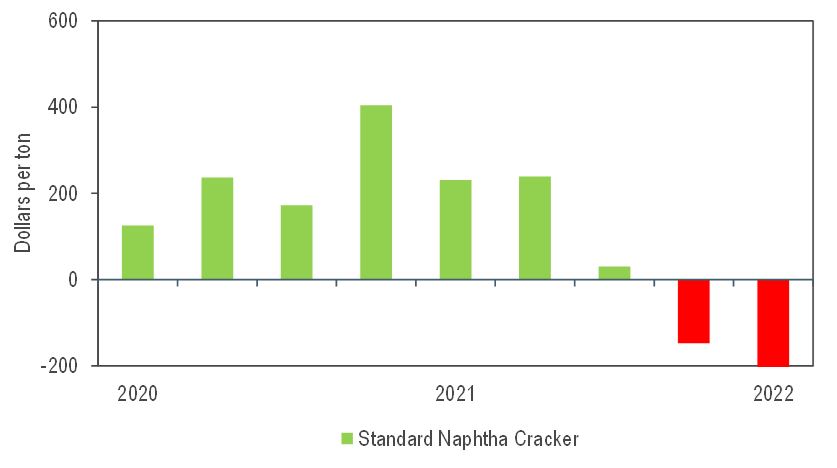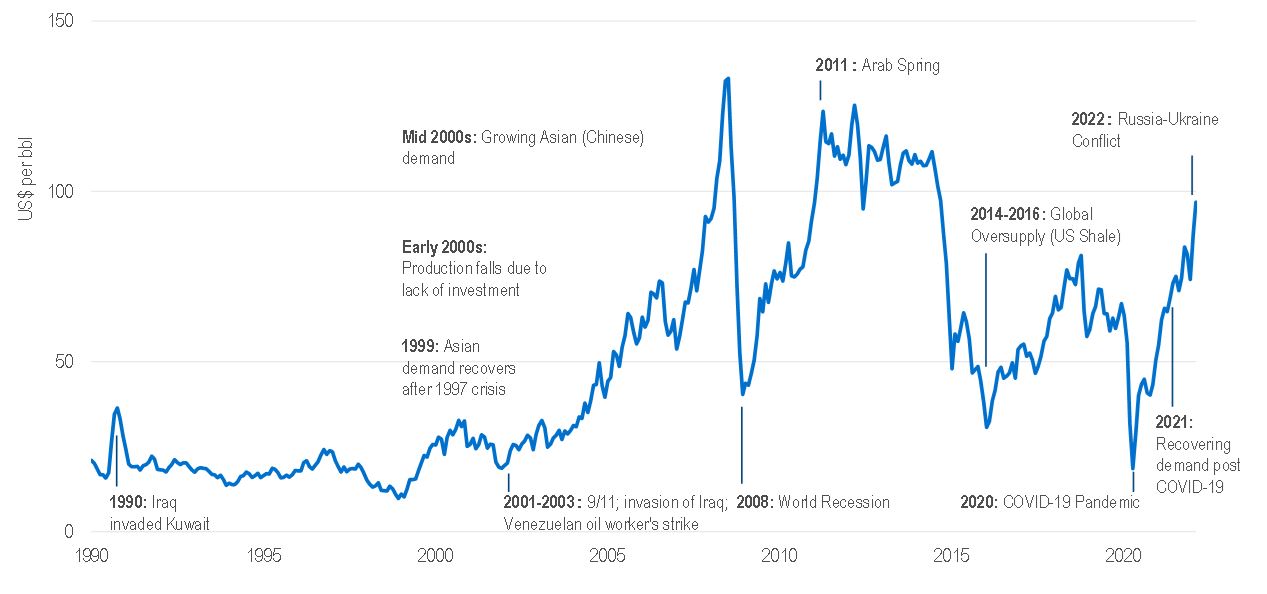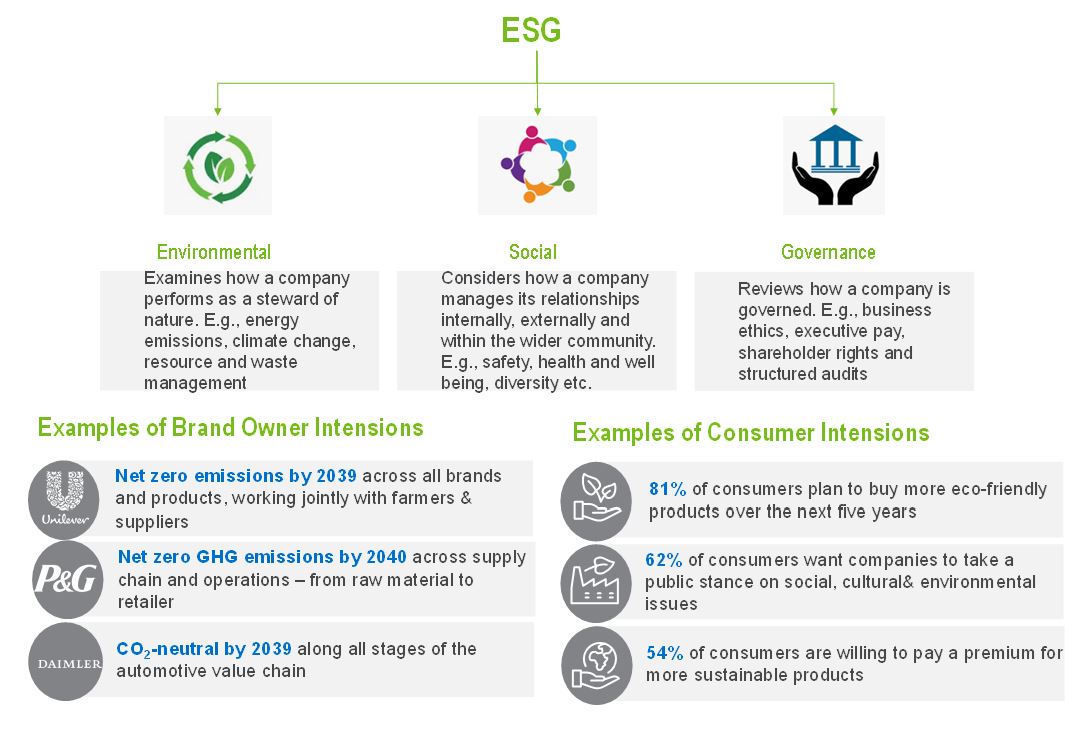Three headwinds for global petrochemicals

Over the past few months, the health of the petrochemical industry has declined dramatically, and the sector is now facing a series of short- and longer-term challenges. The energy landscape has changed in 2022, following sharp increases in crude oil and gas prices. Consequently, operating costs for most petrochemical producers have escalated by approximately 30 percent since the start of the year, resulting in a margin squeeze for naphtha-based producers. Petrochemicals consumption, previously held-up well across most end-use sectors in 2021, despite ongoing disruptions associated with covid. However, consumption has been soft in the first quarter of 2022 and has since stagnated further following news of extended lockdowns in China and ongoing supply chain bottlenecks. Furthermore, consumption of petrochemicals is forecast to be negatively impacted by high inflation, the highest in more than 20 years in many countries, and the possible emergence of additionally covid related lockdowns in China. There is now a consensus of a global recession occurring in 2023 or 2024 and according to some analysts this may already be underway in 2022. The short-term outlook for petrochemicals is characterised by structural oversupply, energy market uncertainty and diminishing market consumption.
Naphtha Cracking Cash Margin
NexantECA - Naphtha Cracking Cash Margin
NexantECA has identified three headwinds for the global petrochemical industry:
1. Rising production Costs
Crude oil prices have increased sharply in the first quarter and trended above US$100/ton since March 2022. Much of this increase is being attributed to the ongoing conflict in Ukraine and resulting sanctions being imposed on Russian crude oil and gas exports. Oil price volatility has become a more common occurrence since the onset of the financial crisis in 2007. It was only two years ago, following the onset of the corona virus, when markets experienced a significant decline in oil prices. In early 2020 crude oil prices plummeted by approximately 25 percent in response to changing demand, and sentiment, resulting in a significant global supply glut.
Higher oil prices result in increased production costs, for most petrochemical producers. However, gas-based production in the Middle East and the U.S. (shale driven) are set to benefit from higher oil prices. Petrochemical production costs in the Middle East and U.S. are not increasing at anywhere near the same rate as naphtha-based producers in other regions. Historically, naphtha-based producers have been able to manage higher energy costs, under better market conditions, and pass-on higher feedstock costs down the value chain. However, market conditions today are not favourable and competitive rivalry amongst producers is high.
Crude Oil Pricing Landscape (Brent Crude Oil, FOB Sullom Voe)
Crude Oil Pricing Landscape
2. Structural Oversupply
Petrochemical industry profitability exhibits cyclicality and the sector continues to operate in a boom-and-bust environment. Issues that contribute to industry cyclicity include fluctuations in consumption, pricing disparity between different feedstocks, evolving process technologies and the relative fragmentation in global supply. However, NexantECA’s analysis shows that supply side factors have the greatest influence on petrochemical cyclicality. Petrochemical investments are highly capital intensive and take a long time to fully execute. Historically the development of a mega olefins complex would take around 5 years to execute. However, the overall timeframe is gradually being extended as projects get bigger and more complex with the addition of different upstream and downstream interfaces. Furthermore, projects are being increasingly developed in new regions which present additional challenges associated with higher risks, local bureaucracy and general skill shortages.
Secondly new projects are being assessed and developed over a similar period and therefore coming onstream at the same time. Aside from gas-based production in the Middle East and U.S.A, the petrochemical industry has a comparable cost structure and is subject to global pricing. Therefore, the industry exhibits similar levels of profitability. Consequently, when cash is plentiful, the planning process for new investments begins and results in a barrage of new supply coming onto the market over a similar period. We’re at this point now. New base petrochemicals capacity additions in 2022 and 2023 are forecast at 31 million tons per year and 24 million tons per year respectively. NexantECA’s analysis shows supply growth is set to exceed demand growth by approximately 18 million tons per year in 2022 and approximately 12 million tons per year in 2023. Therefore, we are forecasting lower levels of profitability over the next 2/3 years for the petrochemical sector before recovering in 2024. The pace of recovery is largely dependent on how quickly markets can return to trend line growth. However, NexantECA also forecasts some capacity rationalisation with older, higher cost production units being closed. Plant closures are expected to be necessary to rebalance markets and improve industry profitability.
Net Changes in Annual Demand and Capacity for Base Petrochemicals
Net Changes in annual demand and Capacity for Base Petrochemicals
3. Environmental, Social and Governance (ESG)
As governments continue to drive climate and sustainability goals, more pressure, and costs are being passed onto companies to account for their own impact. The large-scale and complex nature of climate change makes it uniquely challenging, especially in the context of strategic planning and investment decision making. Climate risks are affecting asset valuations more than ever before and capital markets are now clearly focused on investments with both a good ESG performance and competitive financial returns.
ESG is creating significant challenges across the energy and chemicals value chain, which as a sector is at the cutting edge of new global regulatory and policy shifts. Ultimately ESG needs a long-term investment focus and time to succeed. However, energy and chemicals companies are now under increasing pressure to disclose data and set ESG targets. Additionally, companies are set to be closely monitored, measured, and scrutinised on an ongoing basis. Therefore, getting the ESG proposition right is becoming an increasingly important metric for all companies and a key driver for long-term higher value creation. Consequently, petrochemical companies will need to focus on the following:
Waste reduction and principally taking actions to reduce carbon emissions. Leading to increased focus on the application of “green” technologies
Improving community relationships and the reputation of the industry within society. Dealing with plastic waste is currently the hot topic in this area but there are host of other issues to be addressed also
The development of appropriate practices, controls and procedures to ensure self-governance and compliance.
NexantECA ESG
Find out more...
The Markets and Profitability program tracks over 60 feedstocks, petrochemicals, polymers and fertilizers on an ongoing basis and provides regularly updated reports covering all commercial aspects of these global industries. The accompanying database, provide global data, analysis and forecasts in two major inter- related areas: Markets and Profitability.
Contact us for a Demo of the Online Database.
The Author
Lee Fagg, Vice President



